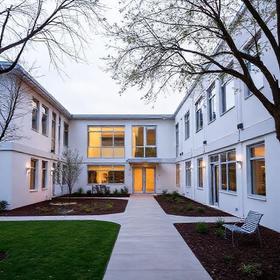How Sliding-Scale Tuition Models Are Expanding Access in Boarding Schools
Sliding-scale tuition has become one of the most significant developments in independent school affordability in 2025. As boarding schools work to broaden access and strengthen socioeconomic diversity, sliding-scale tuition models offer families a more predictable, transparent, and equitable way to pay for a world-class education. While traditional financial aid systems remain in place at many institutions, the adoption of sliding-scale tuition introduces clearer expectations and a more holistic view of family ability to contribute.
This article explores how sliding-scale tuition models work, why they are expanding, and how they are reshaping the boarding school landscape. It also highlights practical considerations for families evaluating options and provides examples of how schools are implementing these models today.
What Sliding-Scale Tuition Means Today
Sliding-scale tuition links a family’s tuition responsibility directly to household income and financial circumstances. Rather than applying for financial aid through a traditional packaged approach, families fall within an income band that corresponds to a tuition range. The result is greater transparency, fewer surprises, and a more equitable process.
In 2025, schools are refining sliding-scale tuition with clearer income brackets, adjusted asset considerations, and priority for middle-income families. Many have also improved online calculators and published ranges to help families quickly determine affordability.
Key characteristics of sliding-scale tuition include:
Tuition is based on verified financial information.
Families receive a consistent, predictable range rather than a single award amount.
Schools consider income, assets, dependents, and extenuating circumstances.
The model aims to reduce administrative burden and increase clarity.
Families exploring baseline expectations and school-by-school differences can review related guidance on Private School Review’s article about how to afford private school.
Why Boarding Schools Are Expanding Sliding-Scale Tuition Models
Boarding schools have experienced shifting enrollment patterns, rising operational costs, and increased competition from public and charter institutions offering specialized programs. Sliding-scale tuition addresses several core needs:
Meeting the Demand for Transparency
Parents are increasingly seeking straightforward, upfront cost information. Traditional financial aid processes can feel opaque, especially for middle-income families who assume boarding school is out of reach. Sliding-scale tuition gives these families more confidence at the earliest stages of school exploration.
Strengthening Socioeconomic Diversity
Schools that adopt sliding-scale tuition report broader representation across income levels and geographies. This aligns with longstanding goals to cultivate inclusive communities that reflect a wider range of perspectives and life experiences.
Responding to Inflation and Cost-of-Living Pressures
Rising living expenses have pushed many families who traditionally qualified for moderate financial aid into higher need. Sliding-scale tuition allows schools to adjust thresholds annually in response to economic realities.
BoardingSchoolReview has explored similar themes in its analysis of financial aid trends and the importance of maintaining diverse student bodies.
Improving Institutional Planning
Predictable enrollment, stronger retention rates, and clearer budgeting are notable internal advantages. Schools can anticipate aid expenditures more accurately and plan multi-year financial support for families.
How Schools Structure Sliding-Scale Tuition
Models vary, but most follow an income-based tier system that incorporates additional factors. A typical structure includes:
Household Income Range | Tuition Expectation |
Under $75,000 | Minimal tuition contribution; full support possible |
$75,000–$150,000 | Tuition on a scaled portion of income |
$150,000–$300,000 | Partial aid on a declining scale |
Over $300,000 | Full tuition, with consideration in special cases |
Some schools set more granular brackets, including adjustments for single-parent households or families with multiple children in tuition-charging schools.
Families can also compare approaches using resources such as the income-based overviews available on Community College Review, which provides a public-sector parallel in its article about tuition and financial support trends.
What Families Should Know Before Applying
Sliding-scale tuition simplifies affordability, but families still need to prepare. Key considerations include:
Gather Financial Documentation Early
Since sliding-scale tuition relies on accurate income verification, families should prepare tax returns, W-2s, investment statements, business documentation, and information about dependents. Schools want a clear, honest portrait of overall financial capacity.
Understand That Tuition Ranges Still Vary
Even with published ranges, the final tuition amount can differ based on assets, unusual expenses, or family size. It is important to view published scales as guidelines rather than exact guarantees.
Compare What Tuition Includes
Boarding schools vary in what they bundle into tuition. Some include textbooks, weekend activities, or technology fees. Others charge separately for travel programs, athletic equipment, or international student services.
Ask About Multi-Year Stabilization
Many families appreciate knowing that their sliding-scale tuition will remain predictable over several years, assuming financial situations remain stable. Schools differ in how they recertify or reassess family information.
For more context on factors that influence overall boarding school costs, families can review BoardingSchoolReview’s guide on what boarding school tuition includes.
Case Examples of Sliding-Scale Tuition in 2025
Although each school personalizes the model, several patterns are emerging among leading boarding schools:
Regional Boarding Schools Offering Community-Based Scales
Some schools now publish community-adjusted tuition scales that reflect local cost-of-living benchmarks. This helps rural families or those living in high-cost metropolitan regions understand their placement on the scale with greater accuracy.
Schools Prioritizing Middle-Income Access
Institutions that historically attracted families with higher incomes are recalibrating sliding-scale thresholds to ensure middle-income families remain competitive applicants. Many schools report that these families form the backbone of their residential programs.
Schools Publishing Interactive Affordability Calculators
Interactive calculators, updated for 2025, allow families to input household information and receive an estimated sliding-scale range instantly. These tools reduce inquiries, streamline applications, and help families identify realistic matches faster.
Boarding Schools Offering Transparent Multi-Year Commitments
More schools are guaranteeing predictable tuition levels for the duration of a student’s enrollment unless a family’s financial situation changes significantly. This strengthens retention and increases family confidence.
Benefits of Sliding-Scale Tuition for Families
Sliding-scale tuition offers several tangible advantages:
Predictable planning for multi-year school cost
Transparent understanding of affordability from the start
Reduced stigma compared to traditional financial aid
Higher likelihood of fit for middle-income families
Admissions decisions that better reflect a school’s full mission
These benefits support both financial equity and long-term relationship-building between schools and families.
Benefits for Schools
From the institutional perspective, sliding-scale tuition models help:
Expand socioeconomic diversity
Create stronger pipelines of mission-aligned families
Support more strategic budgeting and enrollment forecasting
Reduce administrative workload linked to traditional aid systems
Strengthen long-term planning and community stability
The combination of predictability and equity has made sliding-scale tuition a core focus of independent school finance discussions in 2025.
Challenges and Considerations
Sliding-scale tuition is not without complexities. Schools need to balance transparency with flexibility to evaluate unique family circumstances. They also need to maintain financial sustainability while expanding affordability.
Common challenges include:
Ensuring ranges keep pace with economic realities
Addressing family concerns when placed at higher tiers on the scale
Managing trade-offs between financial aid availability and operational costs
Training admissions teams to explain the model clearly and consistently
Nonetheless, the advantages of sliding-scale tuition continue to outweigh these concerns at most institutions.
The Future of Sliding-Scale Tuition in Boarding Education
By 2025, sliding-scale tuition has evolved from an innovative experiment into a central affordability strategy at many boarding schools. Schools increasingly view it as an essential part of their mission to widen access, strengthen diversity, and compete in a rapidly shifting educational landscape.
As more families seek transparent and predictable tuition options, sliding-scale tuition is likely to expand even further. Schools that adopt the model early will be well positioned to attract mission-aligned students and build communities grounded in equity and opportunity.
Sliding-scale tuition models are helping families assess affordability with greater confidence, promoting transparency, and opening the doors of boarding schools to a wider range of students. With clearer information, better planning tools, and a rising commitment to socioeconomic diversity, sliding-scale tuition is reshaping the boarding school experience for the better.












